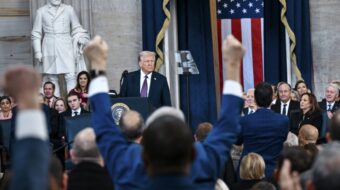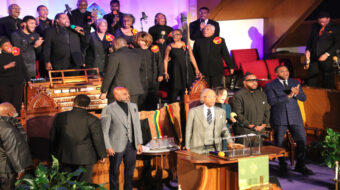
DALLAS – Reliable office holders, not fiery challengers, benefited from low turnout and were the winners in the May 29 Texas primary election. Labor’s selected candidates did better than OK. Republicans did better than Democrats. The highly anticipated Latino vote failed, again, to materialize.
The road to May 29 began last year when the Republican-dominated Statehouse redistricted the state so that, in spite of a gigantic population gain by Democratic-leaning Latinos, Republicans could be reasonably sure of taking three of the four new congressional seats created by the Census. The Republican domination of statewide politics, the insurgent tea party candidates, and the tremendous hype around their previously unsettled presidential primary made their turnout, a miserable 11 percent of the electorate, more than double what the Democrats received. Historically, Democrats get better turnout in primary elections. Mitt Romney picked up enough delegates to insure his nomination. The establishment Republican, Lt. Gov. David Dewhurst, beat out the tea party darling, Ted Cruz, but not by enough to avoid a runoff.
The AFL-CIO’s Committee on Political Education (COPE) labor candidates, all Democrats, did well across the state. The Texas AFL-CIO reported that their candidate for the one state Senate seat available came in well ahead of his July 31 runoff opponent. Labor activists will certainly continue working hard for Paul Sadler, as they learned that his July 31 opponent wants to help employers by cutting the minimum wage! Around the center of the state, labor was working hard to return Congressman Lloyd Doggett to office. Doggett has been so unbearable to Republicans that they made certain, through redistricting and hoping that Latino voters would oppose him, that he could not possibly beat his two opponents. But he did it anyway and doesn’t have to go through a Democratic runoff before facing the Republican in November.
The one new congressional district that Republicans reluctantly allowed a possible majority of Democratic voters was CD 33. They threw the majority of Latino voters from Dallas into a district with the majority of African American voters from Fort Worth. The two minority groups, and the two cities, were forced to compete like “Hunger Games” for the amusement of the Republicans. Labor endorsed Marc Veasey, an African American from Fort Worth who had solid Democratic Party credentials. To the surprise, shame and consternation of those hoping and praying for a big Latino turnout and aiming to pit Latino voters against African Americans, Veasey took 38% of the vote. His nearest competitor, Domingo Garcia of Dallas, came in with 26%. The fight will be resolved July 31.
Latinos were disappointed to see long-time El Paso Democratic Congressman Silvestre Reyes go down in flames before a virtually unknown Anglo, Beto O’Rourke, with a record of personal public disgrace and a program whose only distinguishing feature was legalizing marijuana.
Texas Democrats, unlike those in some states, took the presidential race seriously enough to endorse Barack Obama by 88%.
The Latino vote did increase in the Rio Grande Valley. Seniors over 65, who are allowed to vote by mail, increased their clout. Those who actually threw themselves into working the phones and streets, especially organized labor, were well rewarded. The most progressive leader of the state, AFL-CIO President Becky Moeller, said, “Up and down the ballot, the candidates who had the support of working families performed strongly, especially in light of the exceptionally weak turnout in the Democratic primary. We believe that union brothers and sisters continue to vote in disproportionate numbers in elections. Union votes made an important difference in these contests.”
Photo: Marc Veasey, surrounded by labor supporters, declares victory in Texas’ Congressional District 33. Jim Lane/PW











Comments